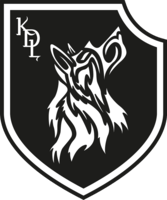This article is a simplified illustration of the highly complex nervous system accompanied by some biology. The science of living organisms is a vast field.
In short! Plants sustain themselves without moving, drawing nourishment from the soil where they reside. With the energy of the sun, they convert the lifeless matter in the soil into their own living substance.
Animals, on the other hand, live by consuming this solar energy already transformed by plants, necessitating movement. They are compelled to act in space and navigate through it, for which a nervous system is required. This nervous system enables actions « on » and « within » the environment, all to ensure survival.
Efficient action yields a sense of well-being, a drive that assists living beings in maintaining their biological balance, their living structure. This drive manifests in four main types of fundamental behavior:
- Consumption behavior (fulfilling basic needs, drinking, eating, mating)
- Flight behavior (avoiding punishment or stepping back to better address personal needs)
- Fight behavior (destroying the source of aggression)
- Inhibition behavior (tense, anxious, blocked, thus unable to control a situation)
The brain isn’t just for thinking; it’s primarily for acting
Species evolution is conservative, and in animals’ brains, primitive forms are found. The « reptilian » brain, the first one, triggers immediate survival behaviors, without which the animal wouldn’t survive. Among mammals, a second brain, the « memory » brain, emerges. Without memory, reacting to what’s pleasurable or not wouldn’t be possible. Then, a third brain, the « cerebral cortex, » which has developed significantly in humans. It’s also known as the associative cortex, enabling humans to create and engage in imaginary processes.
The first two brains, « reptilian » and « memory, » are instinctual, hence unconscious, but crucial for understanding our true personality. The third « cerebral cortex » provides explanatory language, conscious and often excusing the unconscious functioning of the first two.
Excuses and alibis aren’t always conveyed accurately through human language, emphasizing the importance of understanding the nervous system’s operation to gradually learn to listen to the truth of unconscious messages provided by each individual’s instinct and memory.
How does a wolf react?
Wolves are skilled and adaptable animals, indicating they’re evolved creatures. Each action they take is a fragment of their essence. A comprehensive understanding of their general attributes can only be achieved by studying every aspect of a wolf, revealing strength, will, affection, sensitivity, and reactions.
The wolf’s nervous system strongly responds to external stimuli from its environment, triggering survival reflexes. Prepared to confront or flee, the wolf reacts even before fully comprehending what’s happening, as it’s attuned to its heightened instincts.
What is the sympathetic nervous system?
The sympathetic nervous system acts and accelerates bodily reactions. When in danger, stress hormones surge through the nervous system, instantly causing its heart to beat faster, reaching up to 200 beats per minute during intense effort. The wolf has few sweat glands, found in paw pads and interdigital skin. To regulate its internal temperature, it pants, causing saliva to evaporate, cooling its mouth and the circulating blood.
What is the parasympathetic nervous system?
The parasympathetic nervous system relaxes, slowing down bodily reactions to achieve homeostasis, a form of bodily equilibrium. In doing so, the body regulates itself, finding tranquility, regenerating, returning to its original state with full strength. Its heart rate slows to around 90 beats per minute at rest.
The central nervous system comprises the brain (the nervous centers within the cranial cavity along with the spinal cord). Its functioning primarily relies on neurons, specialized cells capable of communicating with one another. It encompasses interpretation and control centers, for instance: receiving, transmitting, analyzing information, regulation, etc.
The peripheral nervous system, composed of nerves, primarily conveys information between organs and the central nervous system. Unlike the central nervous system, the peripheral nervous system isn’t protected by skull and spinal column bones or the blood-brain barrier isolating the central nervous system. Consequently, this lack of defense exposes the peripheral nervous system to mechanical damage and toxins.
It’s challenging to summarize such topics briefly; the science of life is extensive yet necessary for respecting various species crucial to our survival. Human dominance, often political, is built on the power of money, at the expense of human, animal, and plant life. Isn’t this kind of dominance painful and petty?
Conversely, dominance in a wolf pack is solely based on the respect for life, strengthening each other’s lives.
That said, I remain hopeful in humanity and believe that through knowledge and action, it’s still capable of achieving the best for the preservation of our sole wealth, the breath of each species.
Artificial intelligence translation of an original text by Sandrine Devienne
Click here to read the French version

